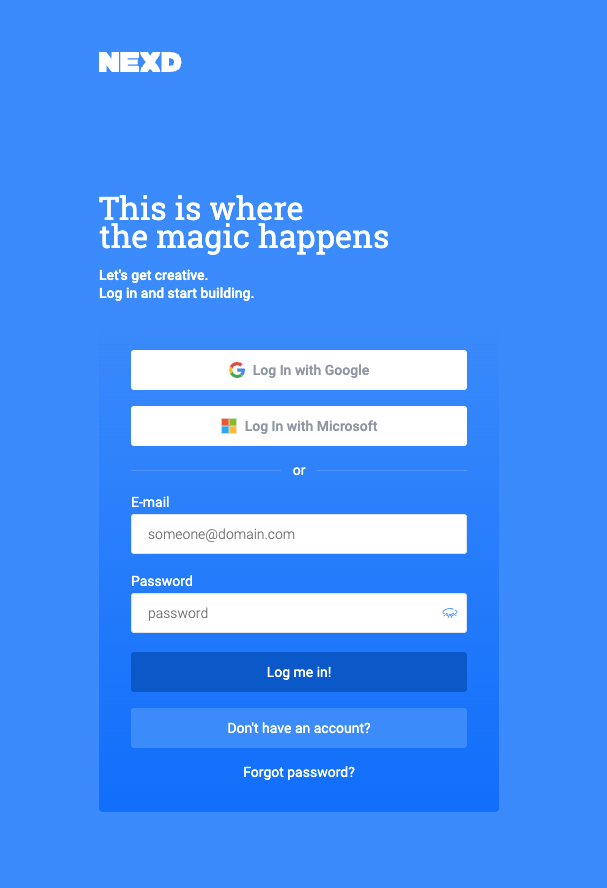5 Must-Track CTV KPIs to Drive Campaign ROI
Connected TV (CTV) advertising is a new way of marketing, offering an unprecedented way to reach and engage with new audiences. With so many marketers taking CTV in their stride, understanding how to measure the success of your campaigns is more important than ever.
To get the best return on investment (ROI), you must take the time to track your key performance indicators (KPIs) – they’ll provide more insight into how your campaign is doing and how you can improve in the future.
In this guide, we’re exploring the top five must-track CTV KPIs that will help you maximize your ROI and fully optimize your marketing strategies.
What are CTV KPIs?

CTV KPIs are a type of metric that measures the performance of your connected TV advertising campaigns.
So, what’s the actual point of tracking KPIs?
They help marketers optimise their campaigns and allocate the right budgets for ad spending so your business can achieve better results in the long run. If used proactively, they can also be used to generate more effective campaigns by identifying and eliminating the poor performing elements of a campaign.
CTV KPIs cover many metrics, including:
- Completion rate.
- Conversion rate.
- Cost per completed view (CPCV).
- Return on ad spend (ROAS).
- Click-through rate (CTR).
Each metric gives a different insight into your campaign performance, whether it’s how engaged your viewers are or if you’re seeing a financial return on your marketing campaigns. To efficiently manage and analyze these important metrics, a dashboard for KPIs can provide a clear and concise overview of campaign performance at a glance.
We’ll cover how each of these metrics will help your business later in the guide.
What is Campaign ROI, and Why is it Important?
Your campaign ROI is a metric measuring the financial return you’re getting from your advertising campaign. It’s designed to help your marketers better understand profitability of individual campaigns and whether they need to invest more or cut back.
To calculate ROI, all you need to do is divide the revenue generated from your campaign by the total cost of the campaign. If the percentage is high, you’re getting good revenue relative to the cost of your campaign.
Campaign ROI is essential because it provides your business with a clear indicator of whether your campaign is financially successful or not. You might be reaching a lot of people, but this doesn’t mean that the campaign is financially worth it for your business.
5 Must-Track CTV KPIs
Free to use image from Unsplash
Let’s take a look at the five best KPIs for tracking the success of your CTV campaigns.
1. Completion Rate
The completion rate is a vital metric for evaluating viewer engagement with advertisements. It gauges the proportion of viewers who watch an ad from beginning to end.
A strong completion rate shows that your content is captivating to your audience and is actively boosting your brand recognition and retention. When viewers sit through your ad without skipping or abandoning it halfway, it shows that they found it interesting and engaging.
To monitor the completion rate, you must track both the number of ad impressions and the number of times the ad was fully viewed. By consolidating data from various sources, you can gain a comprehensive understanding of how well your ads are performing across diverse platforms and devices.
How to Improve Your Completion Rate
To boost your completion rate, concentrate on crafting top-notch, captivating ad material. Make sure your message is concise and compelling right from the beginning, and consider using shorter ad styles if your completion rates are low. Experimenting with different creative approaches and formats can also offer valuable insights into what resonates most with your audience.
Platforms like Nexd’s Campaign Manager can help you monitor these metrics more effectively.
Additionally, understanding the Session Description Protocol (SDP) can be crucial for optimizing media session configurations and ensuring high-quality streaming, which directly impacts the viewer’s experience and, subsequently, the completion rate of your ads.
2. Conversion Rate
Free to use image from Unsplash
Your conversion rate is the ultimate measure of your campaign’s effectiveness in doing what it intends, whether it’s increasing purchases, sign-ups, or downloads.
It monitors how many viewers actually take action once they click on your ad, giving you insight into how your ad turns interest into sales. High conversion rates suggest that you are targeting the right demographic, and are successfully convincing them to interact with your product or service.
To calculate the conversion rate, divide the number of conversions by the number of clicks. Then multiply by 100.
This metric is crucial for analysing the return on investment (ROI) of your CTV campaigns because it directly reflects actions that contribute to achieving your business goals. Monitoring conversions across channels and touchpoints offers a comprehensive picture of how well your campaign is performing.
How to Improve Your Conversion Rate
Improving your conversion rate involves optimising your landing pages so your users can enjoy a seamless experience. Spend time writing clear and concise messaging and strong CTAs, and improve user experience by making your page easy to access and navigate.
Retargeting viewers who have previously engaged with your ads can help increase conversions by reminding them of your offer. Think about adding extra personalisation and dynamic content that adapts to the viewer’s preferences.
If you want to improve your customer engagement strategies even further, use technology like CCaaS (Contact Center as a Service). By asking (and understanding) “what is CCaaS?”, you can take advantage of cloud-based solutions to better manage your customer interactions, which will lead to higher conversion rates in the long term.
3. Cost Per Completed View (CPCV)
Free to use image from Unsplash
The cost per completed view (CPCV) is a crucial metric to gauge the cost-effectiveness of your CTV campaigns. It indicates the expense associated with each finished ad view, offering you insights into how efficiently your advertising budget is being used.
A lower CPCV suggests that you are maximising the value of your ad expenditure, as more viewers are watching your ads in full. This will help you measure the financial benefits of your campaigns and pinpoint areas where you can improve how you spend your advertising budget.
To calculate CPCV, divide the total ad spending by the number of completed views.
By comparing CPCV across different ad segments, you can pinpoint opportunities to allocate your budget more efficiently, saving you money over time.
Improving Your CPCV
To improve your CPCV, focus on targeting specific audience segments to ensure that your ads reach viewers who are more likely to watch them till the end. Outbound call centres can play a crucial role in this process by helping you gather valuable customer data and insights through direct interactions. By gaining a deeper understanding of your audience, you can fine-tune your targeting strategies to connect with more engaged viewers.
Improving your ad creatives to boost viewer engagement can result in higher completion rates and, ultimately, lower CPCV. Using these data-driven insights from call centres to refine your targeting and creative approaches can help significantly reduce your CPCV.
4. Return on Ad Spend (ROAS)
Free to use image from Unsplash
ROAS, or return on ad spend, is the KPI that best assesses the profitability of your CTV campaigns.
It gauges the revenue generated per pound you’ve spent on advertising, giving you insights into the financial outcomes of your campaigns. A high ROAS means that your campaigns are driving great revenue in comparison to the advertising expenses.
To work out ROAS, divide the revenue generated from your ad campaign by the total advertising expenditure.
Monitoring ROAS across all your campaigns and channels can unveil which strategies bring in the most profit.
How to Improve ROAS
To enhance your return on advertising spend (ROAS), it’s important to constantly improve your ad visuals and target audience tactics.
You should consistently monitor the performance of your campaigns to pinpoint successful areas and allocate more resources there. Incorporating advanced attribution models can also offer insights into how your ads perform across all your different platforms.
A fundamental step in this process is learning how to cahttps://www.dealfront.com/blog/total-addressable-market/lculate the total addressable market (TAM). Accurately determining your TAM allows you to recognise the maximum revenue potential for your product or service and focus on the most profitable segments.
Using this data, alongside analytics and machine learning, improves your ability to forecast and optimise ROAS.
5. Click-Through Rate (CTR)
Free to use image from Unsplash
Click-through rate (CTR) is a key metric that gauges the proportion of viewers who click on your advertisement after viewing it. It directly measures how well your ad piques the interest of potential customers which will help you boost your website visits and, in turn, your potential conversions.
A high CTR indicates that your ad is compelling and relevant enough to motivate viewers to take action. This is particularly crucial in the initial and middle stages of the sales funnel, where the aim is to drive traffic and generate leads.
To determine your CTR, divide the number of clicks by the number of ad impressions and then multiply it by 100.
Monitoring CTR enables you to assess how well your ad attracts interest and engagement from your target audience. It also helps to identify which of your ads and creative elements are most successful in capturing viewer attention.
Improving CTR
To boost your CTR, ensure your ad creatives have strong calls to action (CTAs) that encourage viewers to click to find out more. A/B testing different ad elements like headlines, images, and CTAs can also help identify the best combinations for your business.
Targeting the right audience with relevant content will naturally lead to higher CTRs. If you haven’t already, segment your audience into demographics and interests so you can better tailor your ads to resonate with each group.
For instance, you might find that part of your demographic prefers to shop with sustainable businesses. Including a commitment to sustainable advertising in your CTV advert will help convince them to invest in your product.
If you don’t know where to start, using sales force automated software will help you streamline all your sales processes, such as lead generation and contact management, so you can segment your audience.
Other KPIs to Consider
While the KPIs we’ve mentioned above are fundamental for measuring CTV campaign success, there are more metrics you can use that can provide even more insights and help fine-tune your strategies.
Brand Lift
Brand lift is a metric that measures the impact of your ad campaigns on brand perception and awareness.
This includes metrics like:
- Brand recall.
- Brand favorability.
- Purchase intent.
Tracking brand lift can help you understand the broader impact of your campaigns beyond immediate clicks and conversions. Surveys and brand studies are common ways to measure brand lift, as they provide more insights into how your ads are influencing consumer attitudes.
Frequency
Free to use image from Unsplash
Frequency measures the average number of times a viewer is exposed to your ad. It helps ensure that your ads are being seen enough to make an impact without overwhelming your audience.
While high frequency can increase brand recall, excessive repetition can lead to ad fatigue. Finding the right balance is the key to getting the most out of your campaigns.
Reach
Reach measures the total number of unique viewers who have seen your ad. This helps you understand the scale of your campaign and how effectively your ads are reaching your target audience. Ensuring your ads have a broader reach can help increase brand awareness and attract new customers to your business.
Conclusion
In the ever-evolving realm of CTV advertising, it’s crucial to grasp and track the appropriate KPIs to boost campaign ROI and meet business objectives. Advertisers can uncover valuable insights into their campaign performance and make better decisions about their marketing strategies by prioritising:
- Completion rate.
- Click-through rate.
- Conversion rate.
- Cost per completed view.
- Return on ad spend.
Considering other metrics like viewability rate, brand lift, frequency, and reach offers a more holistic perspective on your campaign’s impact and can also help you refine your approach.
Through consistent monitoring and optimisation of these KPIs, you can ensure that your CTV campaigns are not just engaging and impactful but also financially rewarding – now and in the future.

